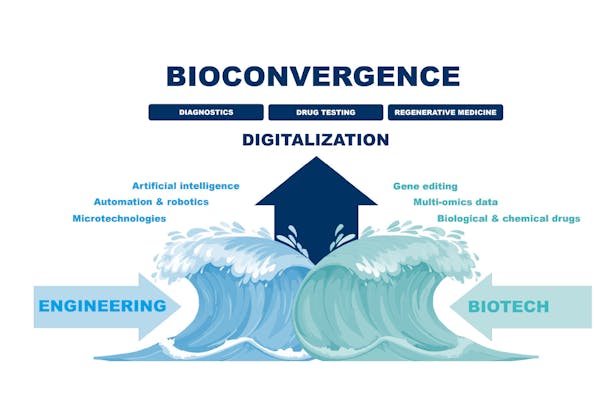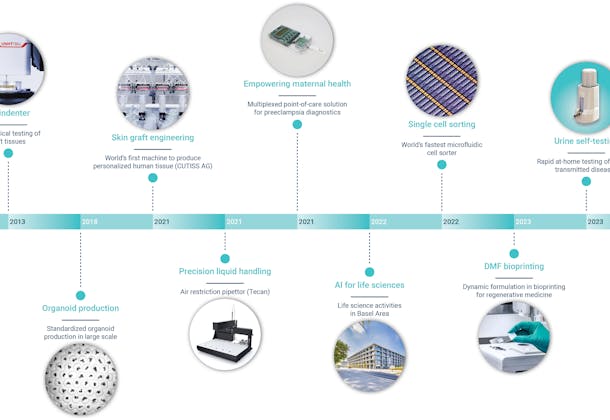Multi-axis bioreactor: preclinical assessment of intervertebral disc tissues
Advanced bioreactors enable investigators to maintain viable tissue samples in closed systems under laboratory conditions. A multi-axis bioreactor has been designed for therapy testing to address the unmet need for the long-term culture of intervertebral discs under complex mechanical stimulation.
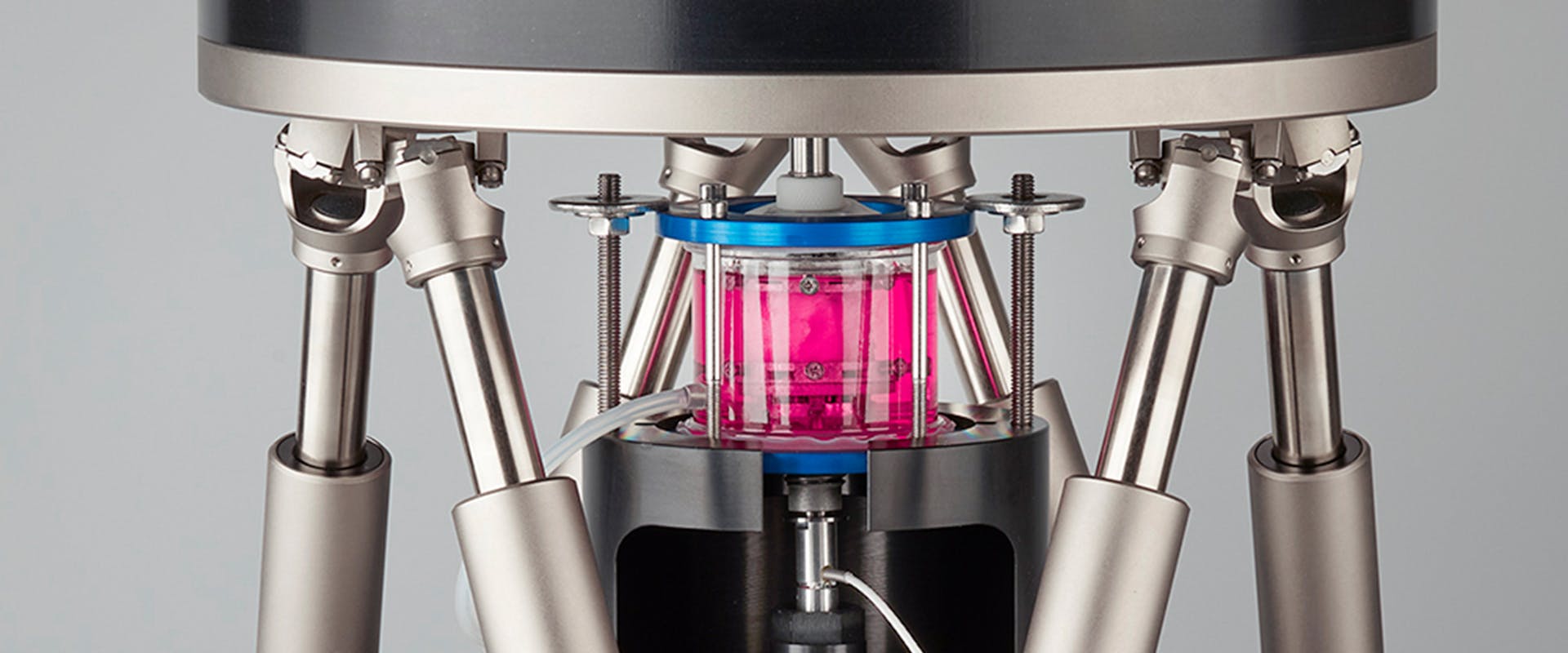
The bioreactor was developed to address an unmet clinical need of how best to treat a leading health problem and cause of reduced work performance, low back pain. Low back pain is most associated with intervertebral disc degeneration. This condition is not life-threatening but a social burden with a high socioeconomic impact.
Why do we need mechanical stimulations?
CSEM’s Tools for Life Sciences team is highly skilled in developing solutions for in-vitro automated microphysiological systems (MPS) for cells, complex 3D models, organoids, and tissues mimicking the physiological conditions of organs. Alongside its partners, CSEM helped ensure the bioreactor’s design perfectly mimics the various motions human spines are subjected to daily, such as flexion, extension, bending, and rotation under closed, sterile, in-vitro conditions. It is critical to reproduce these mechanical stimulations within in vitro systems so researchers can yield identical results, ensuring the reliability of new drugs or therapies to treat musculoskeletal diseases like low back pain.
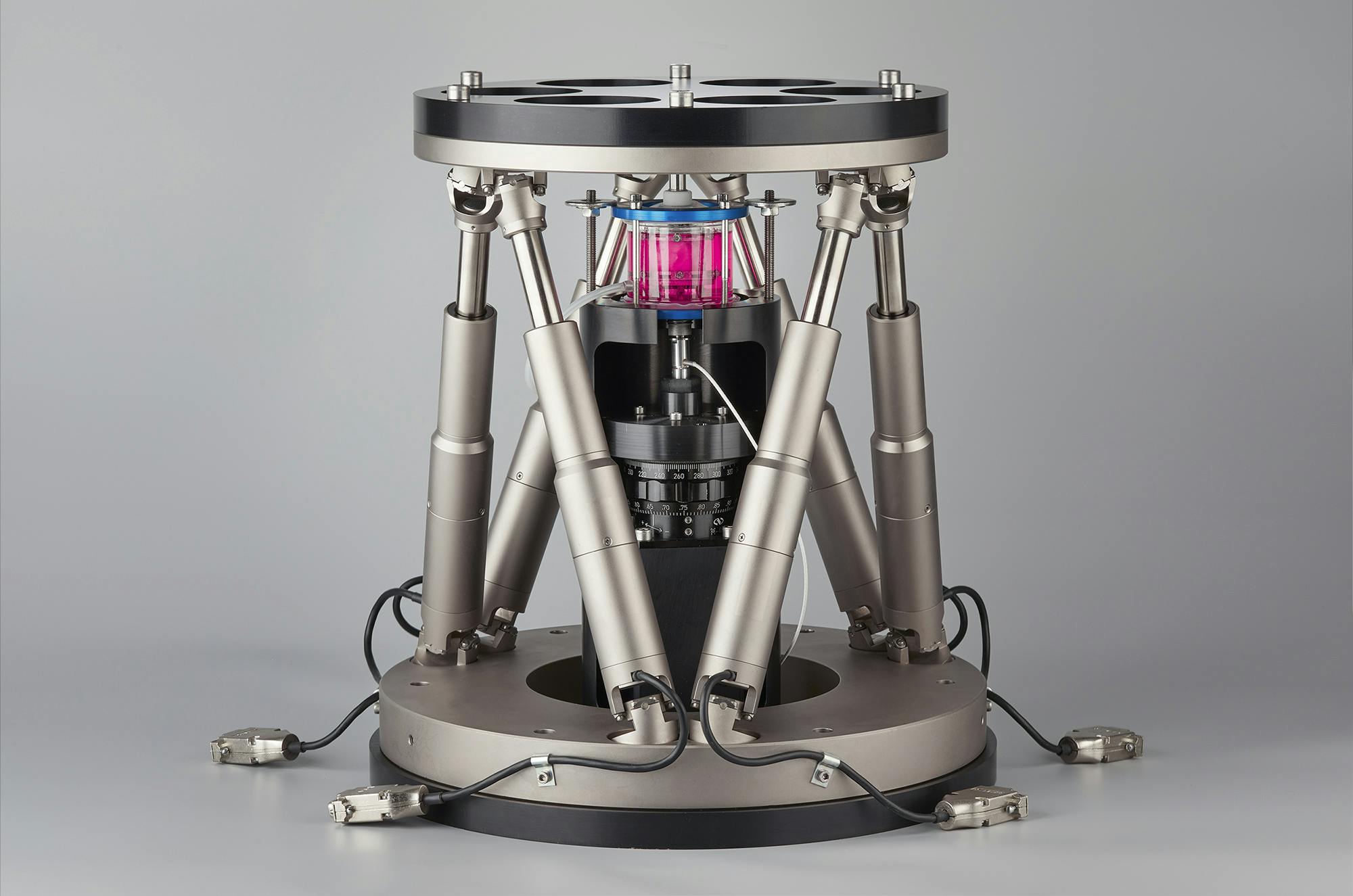
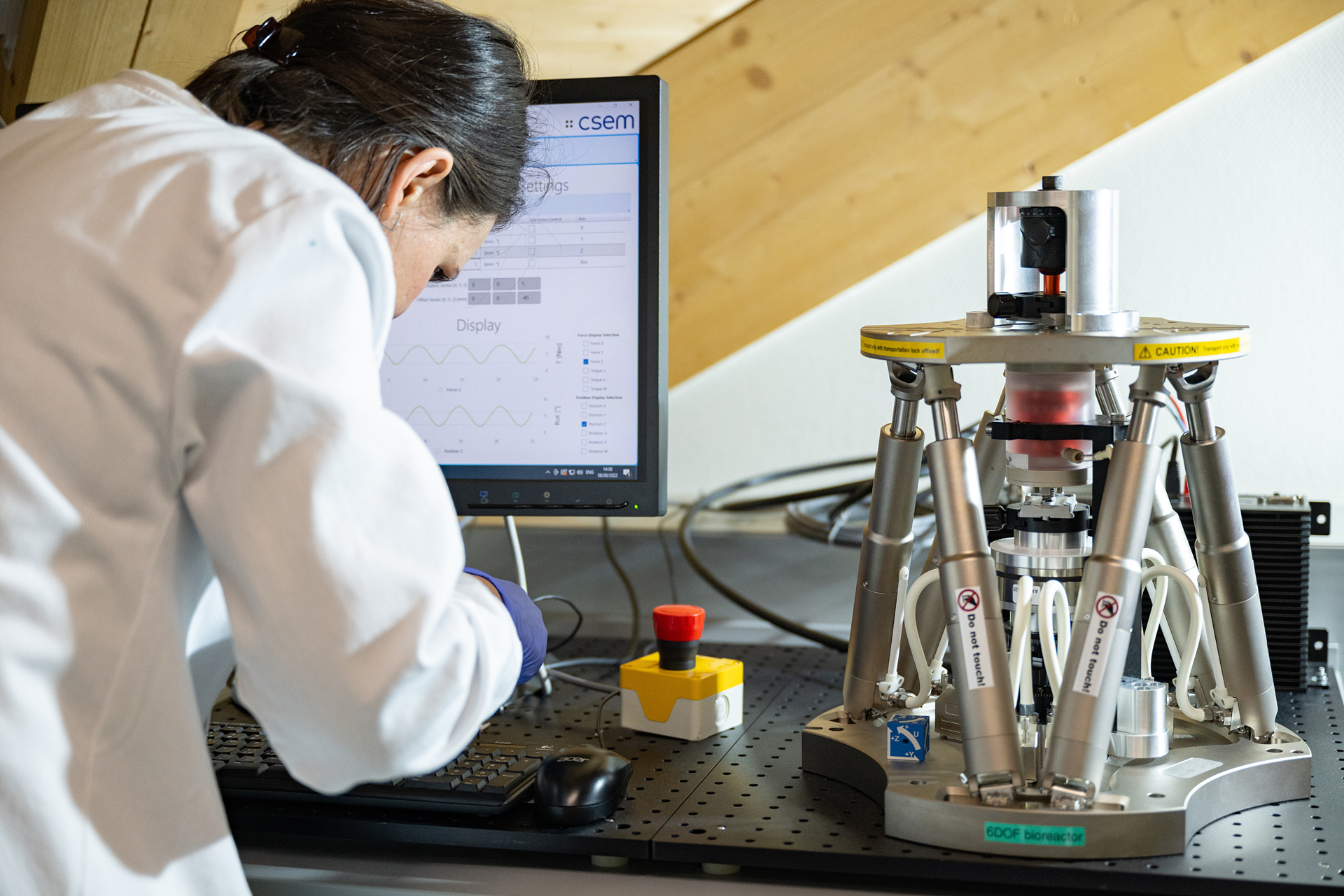
Biomechanical setup for intervertebral disc tissue culture
In collaboration with AO Research Institute Davos (ARI) and the ETH Zurich, CSEM Tools for Life Sciences have developed a new six degrees of freedom bioreactor that can transmit motions to a tissue sample (an intervertebral disc) to reproduce human body conditions while maintaining the tissue under culture conditions. This is possible thanks to a newly developed sample holder, which can efficiently transmit the motion without damaging the intervertebral disc.
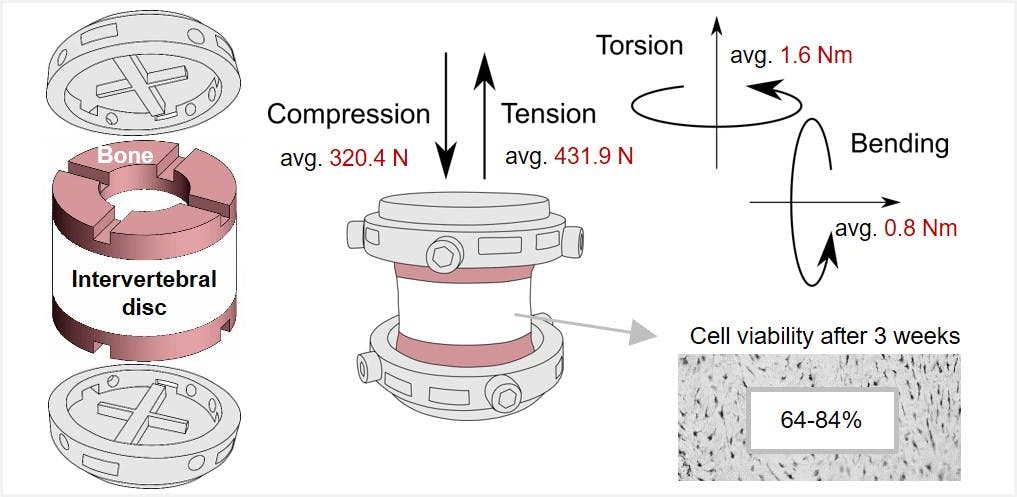
Official publication in ACS Biomaterials Science & Engineering
- Amra Šećerović, Aapo Ristaniemi, Shangbin Cui, Zhen Li, Astrid Soubrier, Mauro Alini, Stephen J Ferguson, Gilles Weder, Sarah Heub, Diane Ledroit, and Sibylle Grad
- “Toward the Next Generation of Spine Bioreactors: Validation of an Ex Vivo Intervertebral Disc Organ Model and Customized Specimen Holder for Multiaxial Loading”
- ACS Biomaterials Science & Engineering, 2022, full publication available here
